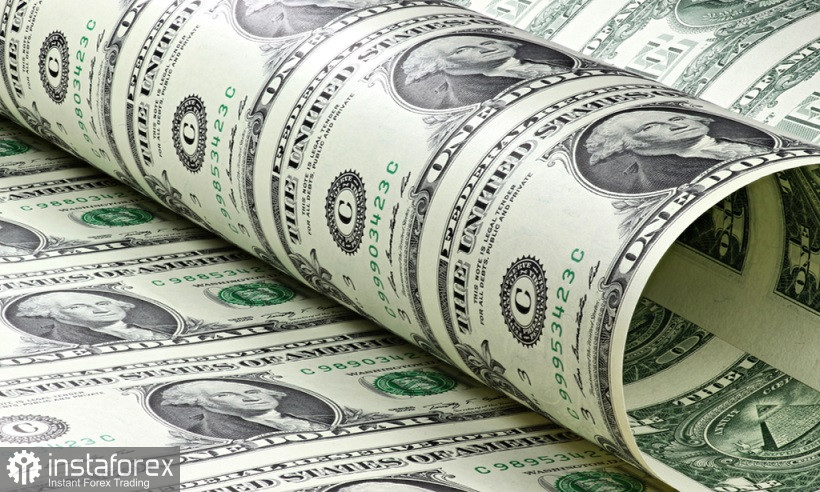The bears of the EUR/USD pair continued their downward tour today. The downward momentum has not yet exhausted itself: sellers are trying to gain a foothold in the area of the 1st figure to prepare a springboard for the next price breakthrough—this time to the level of parity. And by and large, this target does not look unattainable: for example, according to experts of the largest Dutch bank, ING, the pair may reach 1.0000 by the end of this month.
Traders were able to overcome the strongest support level yesterday (1.0339), which opens the way to parity. Bears impulsively overcame a five-year low, which they've been trying to besiege for almost two months since mid-May. It was a psychologically important price barrier, "guarding" the area of 20-year lows. Now less than a hundred points are left to the coveted level of 1.00—negligible compared to the path already traveled. For example, since June last year, the pair has passed more than 2,000 points, and over the past three and a half months, by more than a thousand points. Therefore, sellers may well master the last 200-point spurt.
But note that the last time the pair was below the 1.00 target was almost 20 years ago, in the fall of 2002. Therefore, many market participants will be afraid of "catching the price bottom" when approaching the parity level. And these fears will be fully justified, given the fact that the sharp strengthening of the dollar is more of an emotional nature. While certain macroeconomic signals may well be interpreted against the US currency.

Note that the latest report on the growth of the base price index for personal consumption expenditures in the US (PCE) disappointed the dollar bulls and provoked a 100-point upward pullback for the EUR/USD pair. The data reflected a slowdown in the growth of this most important inflation indicator for the Fed. And this is not a situational failure: now we can talk about the current trend, as the index has been declining for the third month in a row on an annualized basis. The March result (5.3%) turned out to be the peak, after which the indicator began to slowly but consistently slide down, reaching 4.7%.
Recall that the consumer confidence index calculated by the University of Michigan collapsed to 50 in June and 58.4 in May. After this release, the dollar also came under pressure, while the S&P 500 index showed the highest increase since May 2020.
Now we can say with some confidence that at the July meeting of the Fed, the regulator will still decide on another 75-point increase in the interest rate. Several representatives of the Committee have already spoken in favor of this decision. According to CME Group FedWatch, the markets estimate the probability of a rate hike by 75 basis points in July with an 88% chance.
However, the outlook looks bleak, especially if inflationary indicators continue to show signs of slowing growth. Of course, the regulator will maintain a hawkish course in any case—the only question is the pace of monetary tightening. And this issue may become an obstacle to further strengthening of the greenback, especially as it approaches parity with the euro.
During his speech in the US Congress, Fed Chairman Jerome Powell cautiously announced plans for further prospects for raising the rate. During his speech, he linked the issue of tightening monetary policy to the dynamics of inflationary growth. If inflation slows down in June, appropriate conclusions will be drawn, most likely, regarding the rate of the interest rate increase in the second half of the year.
The dollar is currently strengthening its position due to increased anti-risk sentiment in the markets. The EUR/USD pair is justifiably subject to panic, primarily due to the impending energy crisis. The cost of blue fuel in Europe yesterday exceeded $1,800 (a 4-month high), while electricity prices in Germany and France reached historic highs. At the same time, Russia is reducing gas supplies, and Norway (the second largest gas supplier in Europe) said that gas exports could be reduced by 50–60% due to strikes.
Plus, another surge of COVID-19 was recorded in Italy, France, and the UK. The situation is no better in China. Due to the zero-tolerance policy pursued, the Chinese authorities are locking down multi-million cities while ignoring the economic consequences of such decisions.
All of these events and trends have triggered risk aversion in the markets.
Thus, the situation for the EUR/USD pair remains difficult. On the one hand, the bears have every reason to slide down to the parity level, but, on the other hand, the dollar has its skeletons in the closet, which can stop the dollar rally at any moment. It is most expedient now to take a wait-and-see attitude, given the fact that the key support level of 1.0000 is already clearly visible on the horizon. As a riskier alternative, short positions on corrective pullbacks can be considered. However, downward targets should not be below the 1.0150 mark.
 Tiếng Việt
Tiếng Việt 
 Русский
Русский English
English Bahasa Indonesia
Bahasa Indonesia Bahasa Malay
Bahasa Malay ไทย
ไทย Español
Español Deutsch
Deutsch Български
Български Français
Français 中文
中文 বাংলা
বাংলা हिन्दी
हिन्दी Čeština
Čeština Українська
Українська Română
Română

